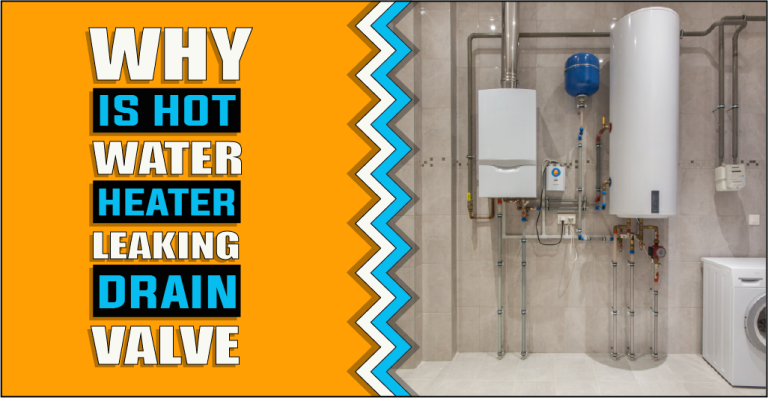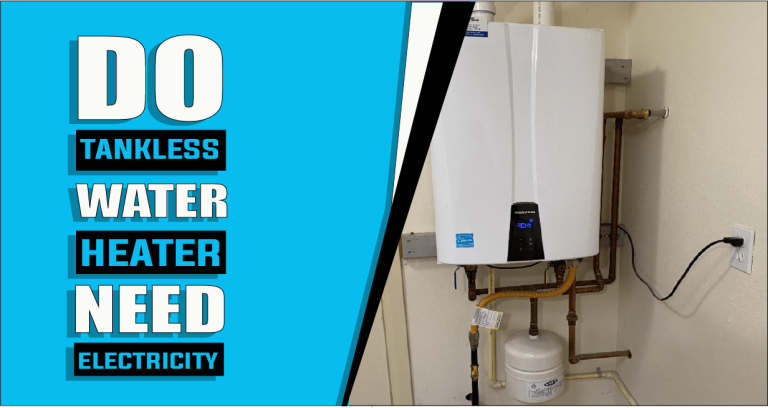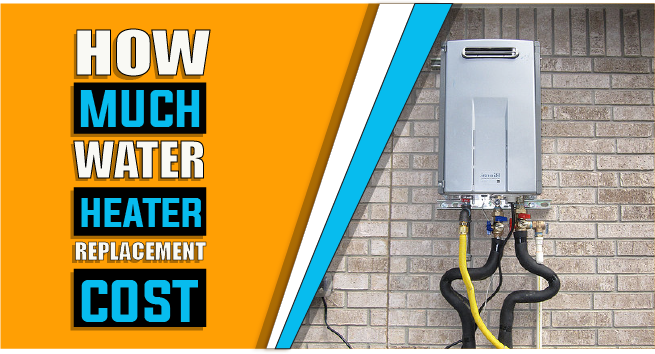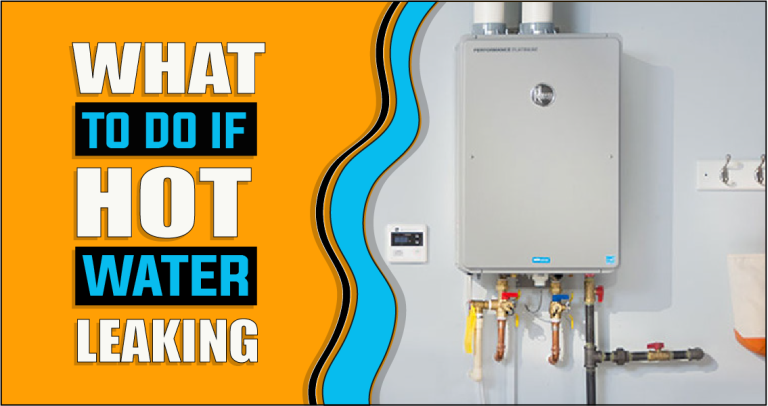What Size Tankless Gas Water Heater Do I Need | Finding Your Match
Choosing the right tankless gas water heater is like finding that perfect pair of shoes – it must fit just right. After all, no one wants to run out of hot water mid-shower or during dishwashing. Tankless gas water heaters offer a solution to this age-old problem, providing hot water on demand without needing a storage tank. But here’s the kicker: “What size tankless gas water heater do I need?” It’s a crucial question, and we’ve got you covered. In this guide, we’ll walk you through the factors to consider and help you make an informed decision, ensuring you have the perfect-sized water heater to keep the hot water flowing in your home.
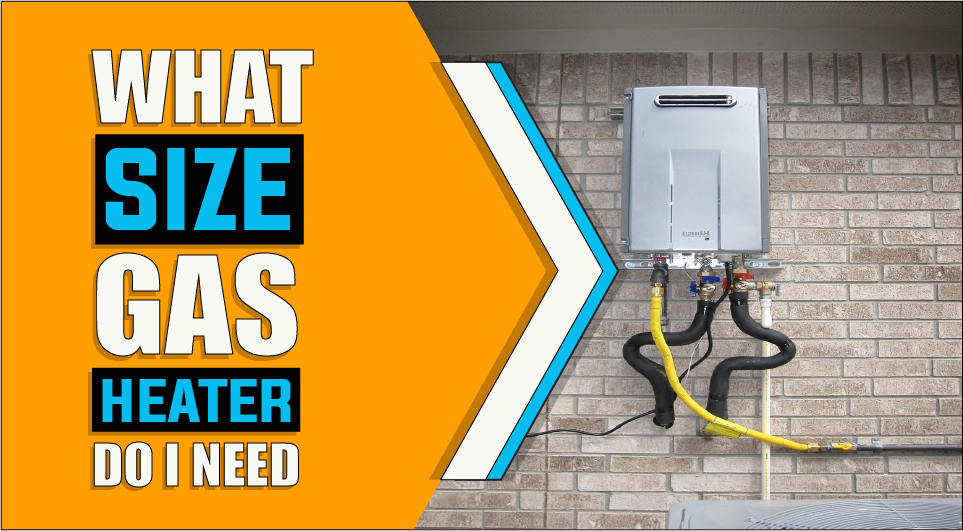
The importance of choosing the right size for optimal performance
Choosing the right size for a tankless gas water heater is crucial for achieving optimal performance. Size matters regarding these efficient devices, as an improperly sized unit can lead to various issues.
Firstly, an undersized water heater may struggle to meet the hot water demands of your household. This can result in inadequate water flow and lukewarm showers – not ideal. On the other hand, an oversized unit may heat the water too quickly, leading to short cycling, increased energy consumption, and unnecessary wear and tear on the system.
Selecting the appropriate size requires considering the number of bathrooms, peak hot water usage, and groundwater temperature. By accurately assessing these variables, you can determine your tankless gas water heater’s necessary BTU rating and flow rate.
Properly sizing your water heater ensures that it operates efficiently and provides a continuous hot water supply when needed. This not only enhances comfort but also saves energy and reduces utility bills. Additionally, an appropriately sized unit extends the lifespan of the equipment and minimizes the need for costly repairs or replacements.
Understanding the different sizes available in tankless gas water heaters
Comprehension of the different sizes available in tankless gas water heaters is crucial for selecting the suitable unit to meet your hot water needs efficiently. Tankless water heaters, also known as on-demand water heaters, provide hot water instantly without needing a storage tank.
When it comes to sizing a tankless gas water heater, several factors should be considered. The peak hot water flow demand in your home is an important consideration. This can be determined by evaluating the number of bathrooms, fixtures, and appliances used simultaneously.
You can use tankless water heater sizing guides or online calculators to determine the appropriate size accurately. These guides consider factors such as temperature rise (the difference between the incoming cold water temperature and desired hot water temperature), flow rates of fixtures, and household usage patterns.
Manufacturers and reputable plumbing supply websites often offer comprehensive resources and guides to help consumers select the correct tankless gas water heater size. These resources consider household size, hot water demand, and climate conditions.
It’s important to note that undersized tankless water heaters may struggle to meet high hot water demands, leading to inadequate supply and discomfort. On the other hand, oversized units may result in unnecessary energy consumption. Therefore, knowing the sizes and accurately sizing the tankless gas water heater will ensure optimal performance and energy efficiency.
Factors to consider while choosing the right size of a tankless gas water heater
Choosing the right size of a tankless gas water heater involves several factors to ensure it meets your household’s hot water demands efficiently:
1: Determining your household’s hot water demand –
Determining your household’s hot water demand is crucial in selecting the right water heater size. Understanding your hot water needs ensures an adequate hot water supply for everyday activities.
One way to estimate your water demand is to consider the number of people in your household. As a general rule, it’s recommended to have 10-15 gallons of hot water per person. This takes into account activities like showers, washing dishes, and laundry.
However, it’s essential to go beyond just the number of occupants and consider specific usage patterns. Do you have multiple bathrooms or appliances that require hot water simultaneously? Do you have a dishwasher or a washing machine that uses hot water regularly?
By assessing your peak hour demand, which refers to the hot water used during the busiest times, you can determine the capacity needed for your water heater. This ensures you won’t run out of hot water when needed most.
2: Calculating the flow rate of your fixtures and appliances –
Calculating the flow rate of your fixtures and appliances is essential in determining your hot water needs and selecting the water heater size. Understanding the flow rate helps ensure that your water heater can supply enough hot water to meet your household’s demand.
One way to calculate the flow rate is by estimating the water used by each fixture and appliance in your home. Refer to manufacturer specifications or use a flow rate and sizing guide, which provides average flow rates for different fixtures like faucets, showers, and toilets.
Another method is to measure the quantity of water a fixture or appliance uses over a specific period. Then, you can multiply this measured quantity by a factor of 6 to calculate the flow rate in gallons per minute (GPM). This simple formula gives you a rough estimate of the flow rate for that particular fixture or appliance. Considering all the fixtures and appliances used simultaneously during peak hours is essential.
Calculating the flow rate of your fixtures and appliances allows you to make an informed decision when selecting a water heater. It ensures that you choose a unit that can deliver sufficient hot water for your daily activities, promoting comfort and convenience in your home.
3: Considering the number of bathrooms in your home –
Considering the number of bathrooms in your home is essential in determining your hot water needs and selecting the proper size water heater. Each bathroom in your home represents a potential demand for hot water, and understanding this can help ensure an adequate supply.
The number of bathrooms directly corresponds to the number of fixtures that may require hot water simultaneously. Showers, sinks, and toilets all contribute to the overall demand for hot water. By considering the number of bathrooms, you can estimate the peak hour usage, which is the maximum amount of hot water required during busy times.
It’s important to note that bathrooms vary regarding fixture types and flow rates. Showers, for example, typically have a higher flow rate compared to sinks or toilets. These variances can provide a more accurate assessment of the hot water demand based on your specific fixtures.
Additionally, consider any future changes or renovations that may impact the number of bathrooms in your home. If you plan to add or remove bathrooms, it’s crucial to reassess your hot water needs accordingly.
4: BTU (British Thermal Unit) requirements –
Understanding BTU (British Thermal Unit) requirements is essential when selecting and sizing heating and cooling systems. The BTU is a unit of heat measurement that quantifies the energy required to raise the temperature of one pound of water by one degree Fahrenheit.
Knowing the BTU requirements in heating helps determine the appropriate furnace or heater size for a given space. Considering factors such as room dimensions, insulation, and desired temperature makes calculating the necessary BTU output possible. Undersized units may struggle to adequately heat a space, while oversized units can lead to energy waste and discomfort.
For cooling systems, understanding BTU requirements is equally important. Air conditioners are rated in terms of BTUs to indicate their cooling capacity. By assessing factors like room size, insulation, and desired temperature, one can determine the suitable BTU rating for an air conditioner. An undersized unit may struggle to cool the space effectively, while an oversized unit may cycle on and off frequently, resulting in inefficient operation.
5: Factoring in simultaneous hot water usage –
Factoring in simultaneous hot water usage is essential when designing a water heating system that can meet the demands of a household. Simultaneous usage refers to situations where multiple fixtures or appliances require hot water simultaneously, such as someone taking a shower while the dishwasher is running or multiple family members using different bathrooms simultaneously.
Considering simultaneous hot water usage helps ensure the water heating system can deliver an adequate hot water supply without compromising comfort or convenience. It requires assessing various fixtures’ flow rates and capacities and determining the peak demand during busy periods.
Selecting a water heating system with the appropriate capacity is vital to meeting simultaneous hot water needs. Tankless water heaters, for example, provide on-demand hot water and can deliver a continuous supply even during peak usage. On the other hand, storage tank water heaters have a finite capacity and may require larger tanks to accommodate simultaneous usage.
By factoring in simultaneous hot water usage, homeowners can ensure that their water heater is sized correctly and can meet the household’s hot water requirements, even during periods of high demand.
Upgrading and Adjusting Sizing Over Time
As life unfolds and households change, so do our hot water needs. What was once a perfectly sized tankless gas water heater may no longer meet the demands of your evolving lifestyle. Fortunately, tankless gas water heaters offer flexibility, allowing you to upgrade or adjust sizing to ensure your family’s continued comfort and convenience.
1: Assessing Changing Hot Water Needs –
- Household Growth: As your family grows, so does the demand for hot water. Additional family members mean more showers, laundry, and potentially more simultaneous hot water usage.
- New Appliances: Introducing new hot water-dependent appliances, like a spa tub or an additional bathroom, can significantly increase the need for hot water.
- Change in Lifestyle: A shift in daily routines or work-from-home arrangements might lead to different usage patterns, requiring adjustments in hot water sizing.
2: Signs That It’s Time to Upgrade –
- Inadequate Hot Water Supply: If you consistently run out of hot water or experience lukewarm showers, your current water heater may be undersized.
- Long Wait Times: Extended wait times for hot water at faucets and showers can signal that the heater is struggling to meet demand.
- Frequent Maintenance Issues: Frequent breakdowns or maintenance requirements could indicate that your water heater is overworked, and it’s time for a larger unit.
3: How to Upgrade or Adjust Sizing –
- Consult a Professional: Start by consulting a licensed plumber or HVAC technician. They can assess your current hot water system and provide recommendations based on your changing needs.
- Calculate New Sizing: When initially selecting your tankless gas water heater, use the same sizing calculations. Consider the updated factors like the number of occupants, new appliances, and desired temperature rise.
- Explore Technological Advancements: Take advantage of technological advancements in tankless gas water heaters. Modern units often offer greater efficiency and more precise sizing options.
Benefits of upgrading the size of tankless gas water heater
When upgrading your tankless gas heater’s size to meet changing hot water needs, the advantages extend beyond ensuring a consistent and efficient hot water supply. Let’s explore the benefits of upgrading in more detail:
1: Efficient Hot Water Supply:
An appropriately sized tankless gas heater ensures a steady and reliable hot water supply, even during peak usage. No more waiting for the water to heat up or running out of hot water mid-shower.
2: Energy Savings –
Right-sizing your water heater means it operates optimally to meet your needs. This efficiency translates to energy savings. You won’t be heating excess water that goes unused, leading to lower monthly utility bills.
3: Reduced Environmental Impact –
Upgrading to a correctly sized tankless gas water heater saves money and reduces your environmental footprint. Using less energy to heat water means fewer greenhouse gas emissions and a more eco-friendly home.
4: Long-Term Cost Savings –
While upgrading may involve an initial investment, it pays off in the long run. You’ll likely experience fewer maintenance issues and repairs since your water heater won’t be overworked. Additionally, the energy savings contribute to lower operational costs over time.
5: Enhanced Comfort –
Adequate hot water on demand means enhanced comfort and convenience for you and your family. Enjoy long, luxurious showers, run multiple appliances simultaneously, and experience consistent water temperatures throughout your home.
6: Extended Lifespan –
Upgrading to the right-sized tankless gas water heater can lead to an extended lifespan for the unit. Since it operates efficiently and isn’t constantly running at maximum capacity, it experiences less wear and tear.
7: Modern Features and Technologies –
Newer tankless gas water heaters often come equipped with advanced features and technologies. These may include intelligent controls for remote monitoring, self-diagnostic systems, and improved safety mechanisms, enhancing the overall user experience.
8: Increased Home Value –
A correctly sized and well-maintained tankless gas water heater can add value to your home. Potential buyers appreciate efficient, modern appliances that contribute to lower operating costs and a comfortable living environment.
9: Peace of Mind –
Knowing that your hot water needs are met efficiently and that you’re contributing to energy conservation provides peace of mind. You won’t have to worry about sudden breakdowns or running out of hot water during crucial moments.
10: Eligibility for Incentives –
Depending on your location and the type of tankless gas water heater you choose, you may be eligible for energy efficiency incentives, rebates, or tax credits. These can further offset the initial cost of upgrading.
Conclusion:
In conclusion, determining the appropriate size for a tankless gas water heater depends on several factors. The general guideline on what size tankless gas water heater I need is that you’ll need a unit with a flow rate of at least 6.5 gallons per minute (GPM) to ensure an adequate hot water supply. It’s recommended to consult manufacturer calculation tables or online calculators or seek professional advice to accurately determine the right size for your specific needs. By selecting the correct size, you can enjoy the benefits of continuous hot water while optimizing energy efficiency and cost-effectiveness.
Relevant Questions:
To determine the appropriate size, consider the number of bathrooms, peak hot water demand, and incoming water temperature. You can consult manufacturer calculation tables, use online sizing calculators, or seek professional advice to ensure accuracy.
A flow rate of at least 6.5 gallons per minute (GPM) is generally recommended to ensure an adequate hot water supply. This ensures that multiple fixtures can be used simultaneously without a significant drop in water temperature.
Tankless gas water heaters are designed to handle high-demand situations. However, it’s crucial to select a unit with a sufficient flow rate based on your household’s hot water needs. Consult sizing guides or professionals to determine the size for your requirements.
While ensuring that your tankless gas heater meets your water requirements is essential, excessively oversized units may lead to inefficiency and unnecessary energy consumption. Consulting a professional can help you determine the right balance between size and efficiency for optimal performance.
Ella John is passionate about helping her readers make the best choice when purchasing a heater. She understands that selecting a heater can be difficult and strives to provide information to help make the decision easier. Ella’s website, Heatersinfo.com, provides valuable insight into heating trends and types of heaters and tips on how to care for them. She also advises selecting the right heater based on individual needs and preferences. Her expertise in electronics makes her an excellent source of knowledge, and she is confident that anyone who visits her website will find the perfect heater information for their needs. Ella’s dedication to helping others make educated decisions about buying the right heater is unparalleled, and she hopes to continue offering her expertise for many years. With Ella’s help, finding the perfect heater can be a breeze!

